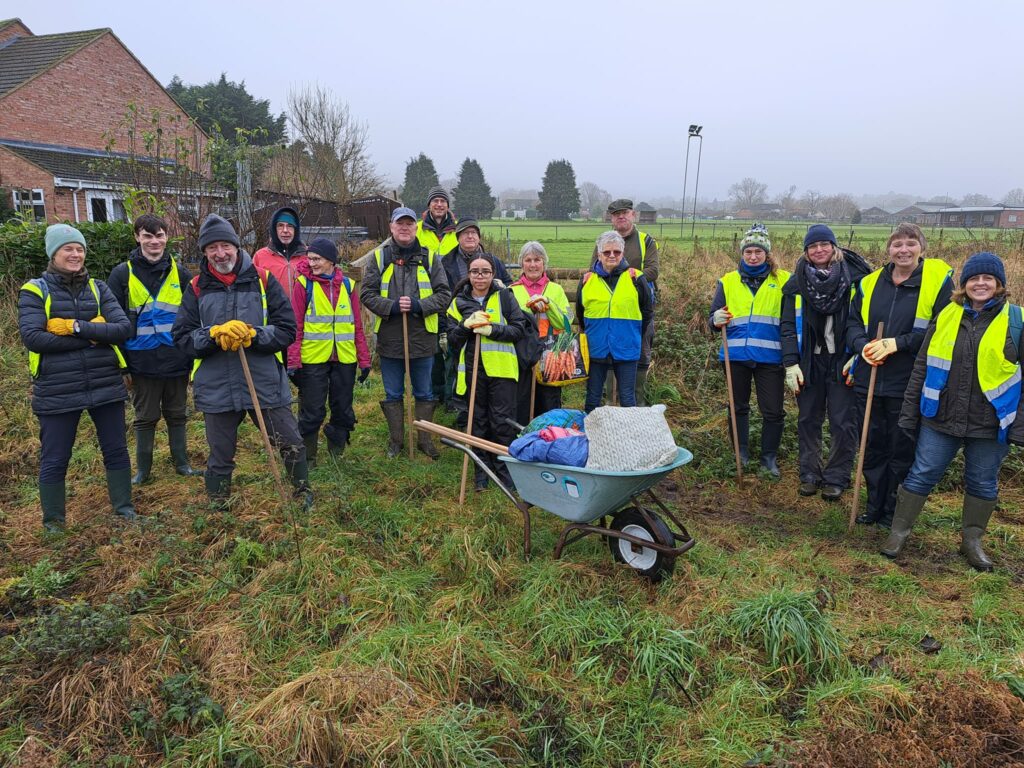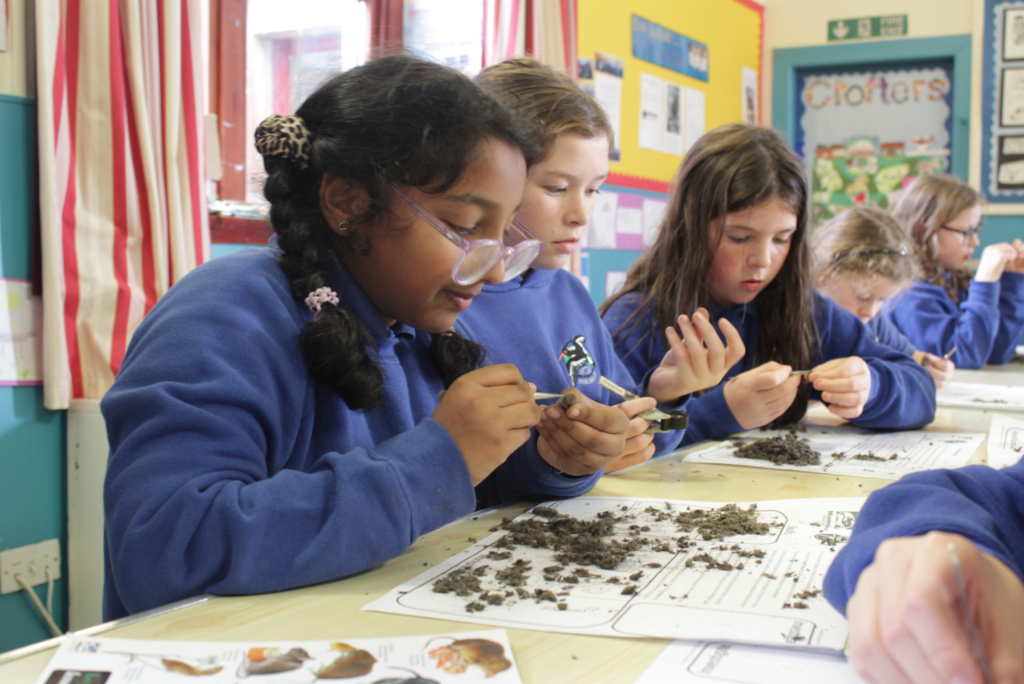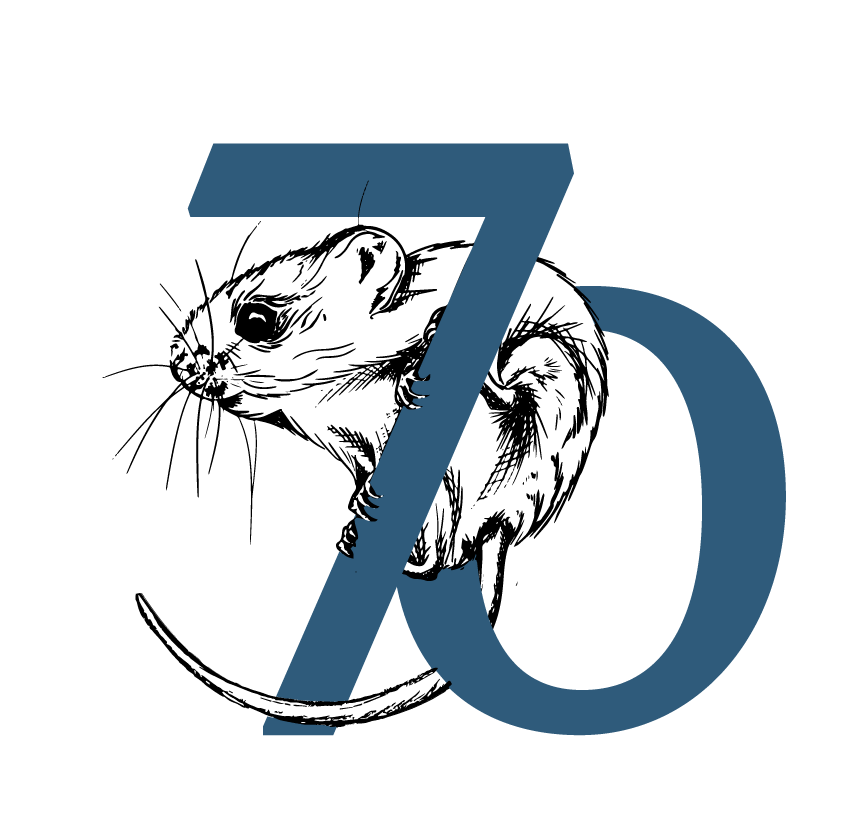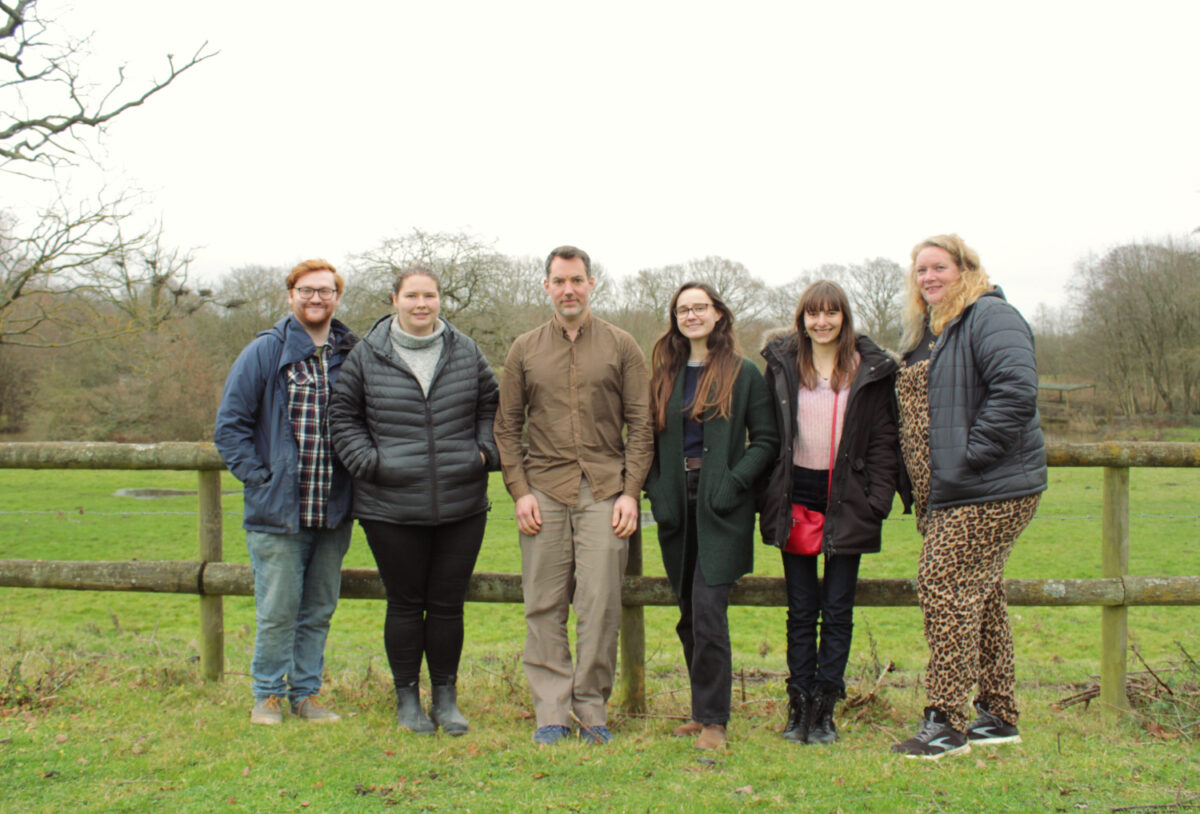The Mammal Society, founded in 1954, is a UK charity formed to support evidence-based mammal conservation in Britain and Ireland. The Mammal Society is involved in promoting and enhancing conservation initiatives working to restore mammals and their habitats, with the overall mission of securing thriving populations of native species.
The Mammal Society will be celebrating their 70th anniversary in 2024, which will be the focus of this year’s annual mammal conference. The conference will focus on the past challenges and successes of mammal conservation, and discuss opportunities for future work.
Matt Larsen-Daw is the CEO of the Mammal Society. Having worked with WWF for some time leading education programmes, Matt is now working with the local mammal groups at the base of the Society’s work. Alana Scott works as communications officer for the Society, with a strong history in conservation biology and ecology. She also has significant achievements in the reintroduction of Water Voles in southern Cornwall.
In anticipation of the upcoming National Mammal Week (22nd – 28th April), we recently had the opportunity to talk with Matt and Alana about the successes of The Mammal Society, their upcoming 70th anniversary and goals for the future.

Firstly, could you give us a brief insight into how The Mammal Society came into existence back in 1954?
Seventy years ago, in 1954, The Mammal Society was formed under the name of The Mammal Society of the British Isles (TMSBI), following a meeting of prominent zoologists, naturalists and the Zoological Society of London. The aim was to link amateurs and professionals in promoting the study of mammals, and by doing so to power conservation of mammals at a time when an alarming decline in the populations of several species was already being observed.
Three years later the society started to deliver on its remit when it published its first book – A Field Guide to British Deer. Perhaps some well-thumbed 1st editions of this vintage text are still sitting on shelves? More likely readers may have one of the beautifully illustrated 4th edition copies of this handbook, published to coincide with another significant anniversary – the 60th year of the British Deer Society – in 2023. The British Deer Society is one of several organisations (including the Bat Conservation Trust and SeaWatch) that started their lives as subgroups within The Mammal Society, until their objectives became sufficiently ambitious and broad in scope to warrant a separate charity. This highlights one of the key roles that The Mammal Society has played over the past seven decades. By acting as a lightning rod for discussion and research around the big issues in mammal science and conservation, the Society has convened experts and enthusiasts to foster collaboration and initiate vital projects at all levels of mammal conservation. From collaborative research projects to species-focused organisations and grassroots local groups, the work of the Society has helped shape the mammal conservation sector we see today.
What do you think has been the key to the enduring success of The Mammal Society?
A key factor in the ongoing success of The Mammal Society is the community of mammal specialists and nature enthusiasts that has formed around it in the form of our members and local groups network. The staff team at the Society has never been big – in fact we are often assumed to be much bigger than we are, due to our vibrant social channels and the large influence we have on policy and practice. Our Council of Trustees, our Committees, and our ever-growing community of local mammal champions are just as important in the achievement of our aims. We are nothing without our members, and we hope that we give plenty back to those who join us in our mission to support and protect British mammals. Members receive our acclaimed seasonal magazine Mammal News, receive substantial discounts on our trainings and events, and have the opportunity to influence the priorities and projects of the Society. Why not join, or gift membership, today?!
At the hub of this thriving community of volunteers and supporters, the staff team arranges forums, events, training, campaigns and research projects that channel the huge energy and expertise in the wider community, while ultimately strengthening and energising that same community.
Our small size has allowed us to be agile and respond to urgent challenges quickly and efficiently – such as the discovery of the non-native Greater White-toothed Shrews in Britain in 2022. It also means our overheads as a charity are low – ensuring that we can put every penny of membership fees and donations to good use in our work to ensure a bright future for mammals.

The world has changed a lot in the last 70 years. Have the key purposes and goals of the charity evolved during this time to adapt to this changing world, or have they broadly remained the same?
Conservation science is powerless without first being able to answer the questions ‘what to conserve?’ and ‘where to conserve?’; to do this we need to know, for each species, how large the population is, where it is (and was) distributed, and its status, threats and requirements. This science is exactly what The Mammal Society has been promoting since its inception, seeking to ensure that whatever the approach needed, it is undertaken in the right way – informed by science and data.
This central remit has certainly not changed. However, the role of The Mammal Society in the conservation sector was a hot topic of discussion in the first few decades. In 1963, a resolution was passed at a meeting that the Society should be ‘a scientific body to which those in authority can turn for factual information about mammals and mammal biology’, upon which to base a judgement of the conflicting claims of different champions. To be accepted as such a body, the Society should not itself become involved in any way with […] controversial matters. In other words, The Mammal Society should gather and present scientific facts but not campaign for any particular action to be taken. This perspective shifted within ten years, with members wanting the Society to be prepared to call for action where it was scientifically justified. Nowadays we certainly consider ourselves to have a key role not only in establishing scientific evidence, but also in ensuring it is seen, understood and acted upon to bring positive outcomes for mammals. Communicating the science and advocating for its application are as important as the science itself if we want change.
The other facet of our work that has become more important in recent years is communicating the importance and wonder of mammals to public audiences, in order to build public support for mammal conservation and encourage more engagement with life sciences – especially among younger people and communities currently under-represented in conservation. This objective is part of our remit to strengthen and energise the conservation sector. For example, our annual Mammal Photographer of the Year competition allows us to spotlight photographers who have captured beautiful and surprising images of mammals in the wild and inspire others to share in their wonder and excitement at spotting our elusive wild neighbours going about their everyday lives.
In 1995, The Mammal Society entered a new phase when it established a network of local groups that could monitor the state of mammals in their area and respond to local issues while playing a key role in contributing to a better national picture of mammal populations. Through this process of evolution, The Mammal Society moved from connecting amateurs to professionals in mammal conservation, to providing anyone concerned about the decline of mammals with ways to get involved and directly help tackle the key issues.
Some of these original groups are still going strong, and others have joined in the nearly 30 years since then. Led by volunteers, these groups provide opportunities for nature-lovers from all walks of life in their community to support citizen science activities that provide essential data and insight to inform mammal research, conservation practice and landscape management policy.
Now we have more than 30 local mammal groups in the network, and their contribution to projects such as the Mammal Atlas, the Harvest Mouse Survey and many other projects cannot be under-estimated – as well as the profound impact many have had on mammal populations locally through their targeted efforts. The Mammal Society have sought to guide and support these groups over the years, but we feel there is much more we could do.
Our new Local Mammal Groups Strategy (reflected in our new Local Groups Handbook) sets out how we intend to invest in growing, strengthening and diversifying the community of local mammal champions that participate in mammal conservation at the grassroots level through the local groups network.

Biodiversity loss and the climate crisis are key issues for everyone involved in conservation at present. What are your main goals for the coming years and decades?
Seventy years on, the challenges that need to be overcome to ensure a bright future for wildlife and people are just as daunting. This means that over the decades to come, our role as convener and mobiliser in the world of mammal conservation will be more important than ever. There is no doubt that reversing the loss of nature will require work from everyone, and the more joined-up those efforts are, the more positive the impact for wildlife and people.
As we move into our eighth decade, we continue to do everything we can to foster collaboration and inclusion in mammal conservation. We aim to bring the scientific insight and expertise of our committees, members, council and staff to strengthen and support any initiatives that can help address the threats faced by our native mammals. As an active member of Wildlife & Countryside Link, we are already adding our voice to those of varied stakeholders across the nature sector to call for urgent action to address issues and redress shortcomings in policy and practice. Via European Mammal Conservation Europe, we have strengthened joint challenges on issues such as the protected status of wolves in the EU. We are active contributors to the RSPB-led UK State of Nature Report, and members of coalitions and steering groups on various species recovery strategies. We continue to engage with government to ensure that policy and priorities are informed by science.
Our commitment to ensuring that everyone understands the importance of mammals, and can play a role in monitoring and protecting mammals, is reflected in our reinvigorated approach to supporting local groups – including an equipment loan scheme, free training for local groups, and an ambitious plan to see at least three new groups in currently under-represented urban areas by 2025. Alongside this our new school programme launches this year, creating opportunities for young people to explore and support mammals, and prioritising schools in areas of deprivation and serving communities under-represented in conservation.

Seventy years as a successful charity is an incredible achievement, not to mention the research, support and training you have undertaken and provided during this time. How are you marking and celebrating this important milestone?
We’re spending 2024 looking back, and looking forward. We want to celebrate what’s been achieved over the past 70 years but also to take the opportunity to look at the challenges ahead and how we can all play a role in meeting them.
To help us highlight this significant milestone, talented illustrator Silvie Tonellotto has designed our beautiful 70th anniversary badge, which will feature on communications throughout 2024. You can see more of her work on Instagram (@silvietonelottodesigns).

One of the key things we are focusing on is celebrating the people whose actions are key to ensuring a bright future for mammals, and especially to show the rich diversity of people and variety of roles people can play in supporting mammal conservation. We have therefore marked this 70th year with the launch of a new awards scheme – Mammal Champions. NHBS generously supported the prizes for the 2024 awards, and we’re delighted to have been able to shine a spotlight on some incredible volunteers, campaigners and thought leaders.
National Mammal Week (celebrated in the autumn in previous years, but now moving to a new home in the spring) is 22nd to 28th April 2024. We’ll be celebrating the wonderful individuals shortlisted for Mammal Champions Awards, while also providing loads of opportunities for anyone in Britain and Ireland to find ways to become mammal champions in their own lives and communities.
Learn more and get involved through The Mammal Society website.

